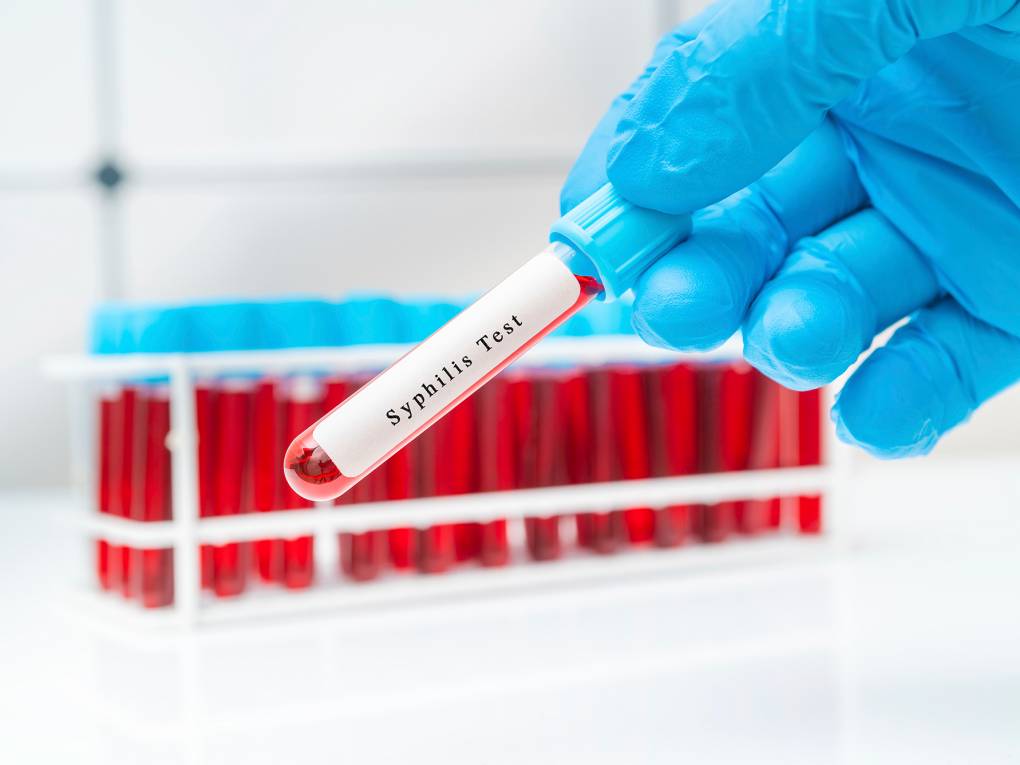
In 2000, syphilis rates were so low that public health officials believed eradication was on the horizon. But the rates started creeping up in 2001, grew steadily for the next two decades, then spiked 74% since 2015. There were nearly 130,000 cases nationwide in 2019, according to data released Tuesday by the Centers for Disease Control and Prevention.
In California, and throughout the United States, about half of syphilis cases are in men who have sex with men. More than a third of women in the western U.S. who have syphilis also use meth, a drug that has seen its own surge in recent years.
These are just some of the trends causing overall national cases of sexually transmitted diseases to hit all-time highs for the past six years in a row, reaching 2.5 million cases. And the consequences are now trickling down to babies who are contracting syphilis from their mothers; these congenital syphilis rates nearly quadrupled between 2012 and 2019.
This was all before the coronavirus pandemic took hold in the U.S., and with contact tracers and testing supplies diverted from STDs to COVID-19, the CDC is predicting 2020 numbers will be no better.
“We are quite worried about this and have seen this trend over time,” says Dr. Erica Pan, California’s state epidemiologist. “Unfortunately, with years of not having enough funding and infrastructure in public health, and then in this past year, of course, both at the local and state level, a lot of personnel who had been focusing on STDs and syphilis follow-up have really been redirected to the pandemic.”
Multiple Factors Fueling Surge
There are many factors that contribute to the rise of STDs, and syphilis in particular.
In the gay community in San Francisco, for example, the rise of mobile dating apps like Grindr and Tinder have made finding a date “faster than getting pizza delivered to your home,” says Dan Wohlfeiler, an STD prevention specialist and co-founder of Building Healthy Online Communities, which uses these apps to improve gay men’s health.
When the dating apps first came on the scene around 2009, they made it harder for disease investigators to track the spread of STDs and notify people who may have been infected, because men don’t always know the names of the other men they hook up with.
“They sometimes only know their online handle,” says Dr. Ina Park, associate professor at UCSF School of Medicine and author of the book “Strange Bedfellows,” about the history of STDs. “And if the sex didn’t go well, then sometimes they will block the person from their app and they don’t even know how to reach that person again.”
Online dating began back in the late 1990s, which was around the same time effective medications to prevent the transmission of HIV became available: first, antiretrovirals that suppress the virus in those who are HIV-positive, and then later, in 2012, preexposure prophylaxis, or PrEP, which prevents new infections in people who are HIV-negative, but considered at risk for exposure to the virus.
With the risk of contracting a deadly disease falling to almost zero, condoms fell even more out of favor than they already were, says Park.
“If one man is taking PrEP and the other one is virally suppressed, there’s no HIV risk at all,” she says. “So why use condoms if you don’t mind having a touch of syphilis?”
Diagnosing Syphilis Is Tricky
While syphilis is not benign — it can cause blindness, deafness or brain damage — it is easy to treat. Typically, a shot of penicillin in the buttock will cure it.
But diagnosing syphilis can be tricky, says Park, who treats patients with STDs at the San Francisco City Clinic. She often finds herself crouched low in the exam room, “lifting up their scrotum and lifting up their penis,” craning her head to get a look from all angles.
She does these gymnastics to find rashes associated with syphilis. Some are obvious, others subtle. She says doctors in regular family medicine clinics often aren’t trained on where to look, or when.
“The patient came in saying, ‘I’m tired,’ ” Park says, referring to a common symptom of syphilis. “How many people are going to say, ‘Take off your pants and lift up your scrotum, I want to look? We only do that at the STD clinic because that’s what we do.”
But specialized public STD clinics, like the one where Park works, have been shutting down nationwide. One reason is persistent underfunding of public health programs, a trend laid bare during the coronavirus pandemic. Another reason is the Affordable Care Act. In a strange way, the 2010 law intended to expand access to health care actually contributed to the closure of STD clinics.

